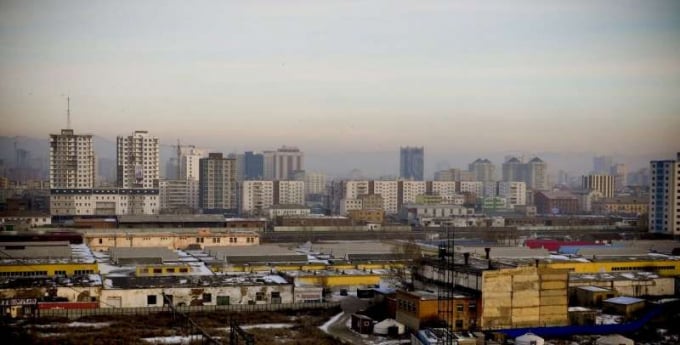November 28, 2025 | 02:39 GMT +7
November 28, 2025 | 02:39 GMT +7
Hotline: 0913.378.918
November 28, 2025 | 02:39 GMT +7
Hotline: 0913.378.918

The chemicals at issue—called aromatics and intermediate- and semi-volatile organic compounds—are emitted from tailpipes and cooking fuels like wood and charcoal, and increasingly also from industrial solvents, house paints, cleaning products and other chemicals. Photo: Public Domain
and gases from vehicle tailpipes, according to a new CU Boulder-led study.
The new work, led by former CIRES postdoctoral researcher Benjamin Nault and CIRES Fellow Jose-Luis Jimenez, calculated that air pollution caused by "anthropogenic secondary organic aerosol" causes 340,000-900,000 premature deaths. Those are tiny particles in the atmosphere that form from chemicals emittedby human activities.
And "that's more than 10 times as many deaths as previously estimated," said Nault, who is now a scientist at Aerodyne Research, Inc. His work, published today in Atmospheric Chemistry and Physics, builds on findings by CU Boulder, NOAA, NASA, and others that emissions from everyday products are increasingly important in forming pollutants in urban air.
"The older idea was that to reduce premature mortality, you should target coal-fired power plants or the transportation sector," Nault said. "Yes, these are important, but we're showing that if you're not getting at the cleaning and painting products and other everyday chemicals, then you're not getting at a major source."
Atmospheric researchers have long understood that particles in the atmosphere small enough to be inhaled can damage people's lungs and increase mortality. Studies have estimated that fine particle pollution, often called PM2.5, leads to 3-4 million premature deaths globally per year, possibly more.
Many countries, including the United States, therefore have laws limiting how many of those particles get into the atmosphere. We regulate soot from power plants and diesel exhaust, for example, which are "direct" sources of particulate matter. And regulations also target fossil fuel emissions of sulfur and nitrogen oxides, which can react in the atmosphere to form fine particles—an indirect, "secondary inorganic" source of particles.
The new work suggests that a third broad category of chemicals—anthropogenic secondary organic pollutants—is a significant indirect source of deadly fine particles.
To determine the mortality impact of several sources of fine particles, the team dug into data from 11 comprehensive air quality studies carried out in cities around the world in the last two decades. They drew on detailed databases of chemical emissions from cities including Beijing, London and New York City, and they ran those numbers through sophisticated air quality models that also incorporate satellite data.
They found that the production of secondary organic aerosol in those 11 cities was strongly correlated with specific organic compounds emitted by people's activities. The chemicals at issue—called aromatics and intermediate- and semi-volatile organic compounds—are emitted from tailpipes and cooking fuels like wood and charcoal, and increasingly also from industrial solvents, house paints, cleaning products and other chemicals.
In previous work in Los Angeles, CIRES, NOAA and other scientists have reported that such volatile chemical products contribute as much as vehicles do to the formation of particle pollution. "What's new here," said co-author Brian McDonald, a NOAA scientist, "is that we are showing this is an issue in cities on three continents, North America, Europe and east Asia."
Air quality regulations have tended to focus on volatile chemicals that produce ozone, another hazardous pollutant, said Jimenez, who is also a professor of chemistry at CU Boulder. But it is increasingly clear, most recently from the new work, that chemicals which contribute little to ozone formation may still contribute seriously to particle formation.
"Because this effect has been thought to be small, it hasn't been targeted for control," Jimenez said. "But when you take the atmospheric chemistry into account and put it into a model, you find that this particular source is killing a lot of people."
Nault and Jimenez said they hope to expand their work to include more urban areas of the world, where there haven't been enough measurements yet to confirm that volatile chemical products contribute substantially to fine particles. But the trend is holding so far in all places where there are enough measurements.
"If you care about air pollution impacts on health and mortality, you have to take this problem seriously," Jimenez concluded.
(Phys.org)

(VAN) A new study reveals how the simultaneous effects of ocean acidification, salinity and loss of oxygen are making the world more fragile.

(VAN) Hopes are growing that the creation of the first 3D turkey gut model could be a turning point in the battle against the virulent blackhead disease.

(VAN) Tyson, America’s biggest meat supplier, plans to shutter one of its largest beef processing plants as the industry continues to struggle with low cattle supplies and political pressure from Washington.

(VAN) New FAO study shows how digital solutions are empowering farmers and fishers to prevent losses and build resilient agrifood systems.

(VAN) Brazil's COP30 presidency pushed through a compromise climate deal on Saturday that would boost finance for poor nations coping with global warming but that omitted any mention of the fossil fuels driving it.

(VAN) Poultry farmers in the UK have been warned that they could face one of the worst winters yet for bird flu.

(VAN) Prices of main-crop paddy have risen sharply, with jasmine rice hitting 16,100 baht per tonne — the highest level in years.